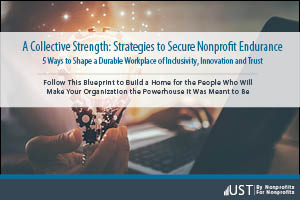
Question: Can we reduce pay because of an economic slowdown due to COVID-19?
Answer: You can reduce an employee’s rate of pay based on business or economic slowdown, provided that this is not done retroactively. For instance, if you give employees notice that their pay will change on the 10th, and your payroll period runs from the 1st through the 15th, make sure that their next check still reflects the higher rate of pay for the first 9 days of the payroll period.
Nonexempt employees (those entitled to overtime) – A nonexempt employee’s new rate of pay must still meet the applicable federal, state, or local minimum wage. Employees must be given notice of the change to their rate of pay, and some states require advance notice.
Exempt employees (those not entitled to overtime) – An exempt employee’s new salary must still be at or above the federal or state minimum for exempt employees. The federal minimum salary is $684 per week. Several states have weekly minimums that are higher than that (California and New York, for instance, are in the $1,000 per week range). The minimum may not be prorated based on hours worked.
Exempt employee reclassification – If an exempt employee has so little work to do that it does not make sense to pay them the federal or state minimum (or you simply cannot afford to), they can be reclassified as nonexempt and be paid by the hour instead. This must not be done on a very short-term basis. Although there are no hard and fast rules about how long you can reclassify someone, it is recommended that you don’t change their classification unless you expect the slowdown to last for more than three weeks. Changing them back and forth frequently could cause you to lose their exemption retroactively and potentially owe years of overtime.
Employees with contracts or CBAs – If employees have employment contracts or are subject to collective-bargaining agreements (CBAs), you should consult with an attorney before making any changes to pay.
Q&A provided by ThinkHR, powering the UST HR Workplace for nonprofit HR teams. Have HR questions? Sign your nonprofit up for a free 30-day trial here.

To help nonprofits combat the most prevalent day-to-day workforce challenges caused by COVID-19, UST has launched a NEW interactive webinar series called “UST Live.” We’re collaborating with reputable nonprofit leaders & HR experts across the U.S. to bring their collective expertise to you—live—in hour-long, virtual panel discussions.
In our first UST Live webinar, the panel discussed the innovative employee management strategies that are being used for onboarding, training, employee development and employee engagement during these difficult times. Plus, the panel answered attendee’s questions related to HR best practices and employee relations management.
Watch now to discover:
Upcoming UST Live Webinars: This webinar series was designed to equip nonprofits with the strategies and resources they need to survive (and thrive) throughout this pandemic. Be sure to register for our next UST webinars—scheduled for October 15th and November 19th—where we’ll discuss how to develop a sustainable strategy for 2021 as well as innovative recruitment best practices.

As we continue working from home—isolated from loved ones, juggling work/life balance and trying to make sense of this seemingly never-ending pandemic—stress levels are at an all-time high. So it’s more important than ever to ensure the well-being of your workforce.
The harmful side effects of long-term stress can lead to increased absenteeism, poor work quality and decreased morale. Taking the time to show you care about your employees’ mental health, by developing activities and resources that help alleviate stress, can create a sustainable, positive workplace.
Without effective mental health resources in place, it could cost your organization its best employees. Uncover 7 Tips to Keep Your Nonprofit Employees Mentally Sound to help foster an engaged workforce during these uncertain times.
Would you like access to more HR-specific articles, templates and checklists? Sign up for a FREE 60-Day UST HR Workplace Trial today! (Use priority code “2020HR-Content” to expedite your request).

The Coronavirus pandemic has pushed the economy into a sudden and deep recession, impacting local businesses as well as a number of large corporations. But the effects of this pandemic on the nonprofit organization has been even more substantial and unfortunately, gone unnoticed. Many citizens rely on the services nonprofits provide such as, social services, medical care and spiritual community. Tens of thousands of nonprofits are likely to close without the support of some kind of rescue package to help keep their doors open. The nonprofit sector is the nation’s third-largest private employer, with 1.3 million nonprofits employing nearly 12.5 million people—about 10 percent of the total number of people working in the private sector.
According to the John Hopkins University 2020 Nonprofit Unemployment Report, more than 1.6 million nonprofit jobs have been lost between March and May of 2020. Private education nonprofits lost an estimated 323,201 jobs, while health care lost an estimated 574,530. As we know, nonprofits come in many shapes and sizes, ranging from large organizations, like city hospitals to small mom and pop thrift shops that help support local charities. No matter the size, nonprofits have been severely impacted by the pandemic in more ways than one. Many nonprofits are unable to perform normal day-to-days tasks due to the number of shutdowns and social distancing requirements. For food pantries and free clinics, the economic disruption has caused an increase in clients in need of these services. While many think of nonprofits as running predominately on donations, roughly half of their revenue come from billing for services, a third from government contracts and grants, and only about 9 percent from individual donations.
While some foundations and charitable-giving funds have seen an increase in their donations, other nonprofits have not had the same luck due to relying on revenue-generating activities and fundraising. Making it not only difficult to keep people on the payroll but also impacting long-term viability of their organization.
Many nonprofits were eligible for federal pandemic aid under the Paycheck Protection Program, which extended potentially forgivable loans to small employers to keep workers on the payroll. But qualifying for such aid can be difficult. Give Kids the World received $1.75 million, however, organizations like the Y.M.C.A. of Metropolitan Chicago were left out because they had more than 500 employees.
The nonprofit sector has more of an impact on the overall economy than many realize—offering crucial contributions to the country’s health, education, social service, and cultural activities. Nonprofits not only make up the country’s third largest workforce but also generate the third largest payroll of any national industry while making important contributions to the tax revenue of the country’s national, state, and local governments. The devastation of this pandemic has put many individuals out of work while closing the doors of many other beloved nonprofits—putting pressure on the vital services these organizations offer their communities.

For over three decades, UST has been providing nonprofits with HR solutions that help manage day-to-day workforce issues, ensure compliance, and maximize employee bandwidth. By offering essential tools such as the job description builder, customizable online employee training tracks, and onboarding checklist, UST helps nonprofits maximize productivity and increase employee engagement.
As part of UST’s ongoing efforts to strengthen and educate 501(c)(3) organizations, we’re excited to announce the recent launch of our newest short video—designed to provide a snapshot of UST’s cloud-based HR platform. About a minute long, this video highlights tools that allow nonprofit employers to navigate the many complex realms of human resource management with ease—including recruitment and employee training.
Check out our newest video today to discover how our virtual HR services can help streamline your nonprofit’s HR processes and simplify day-to-day tasks—so you can focus more time on what matters most: keeping your mission-driven initiatives moving forward.
Test drive UST’s online HR platform today and explore some of these essential HR checklists and training solutions for yourself! Sign up for your FREE 60-Day HR Trial here!

UST releases a new eBook, focused on positive brand perception in today’s increasingly competitive job market.
Founded by nonprofits, for nonprofits, UST publishes an eBook that discusses the importance of ensuring you have a solid brand reputation and why. This insightful eBook uncovers strategies that nonprofit employers can utilize to attract employees that fit their organization’s culture, mission, and values—and keep them.
Available now for download, UST’s eBook explores 5 key strategies that can help strengthen your organization’s culture through inclusivity, innovation and trust.
You’ll also discover:
Don’t miss your opportunity to download your complimentary copy of “A Collective Strength: Strategies to Secure Nonprofit Endurance” to discover how to attract better talent and promote a diverse and inclusive workplace.

Here at UST we’ve put together our Top 10 Guides for 2020 Nonprofit Human Resource management. And for a limited time, we’re giving them away for FREE.
Since 1983, UST has provided nonprofits with the latest HR resources in an effort to help organizations stay compliant, maximize employee bandwidth and reduce overhead costs. This toolkit includes updated 2020 state and local minimum wage data and recordkeeping requirements, as well as a variety of checklists to ensure compliance. Plus, you can discover facts surrounding COVID-19 laws and the latest workplace protocol.
Still have questions? You can get a free 60-day trial of UST HR Workplace, powered by ThinkHR. This cloud-based HR platform offers a live expert hotline, 300+ online training and compliance courses, compensation tools, employee handbook builders and employee classification step-by-step guides. Set up your ThinkHR Trial today!

Question: Some of our employees have said they don’t feel safe returning to work. Can we just permanently replace them?
Answer: We recommend extreme caution when deciding to replace an employee who refuses to work because of concerns about COVID-19. Generally, employees do not have a right to refuse to work based only on a generalized fear of becoming ill if their fear is not based on objective evidence of possible exposure. However, under the current circumstances, where COVID-19 continues to be a threat across the country, we think it would be difficult to show that employees have no reason to fear coming in to work, particularly but not exclusively in a location with a shelter-in-place rule. Returning employees may also have certain rights under state and federal law. Here are few things to keep in mind:
Check state and local law to see if additional protections may apply.
Instead of replacing employees who express fear at this time, we recommend that you consider methods to encourage employees to come to work and to help put their minds at ease. Consider emphasizing all of the safety methods you have put in place (such as scheduled handwashing, frequent disinfection of surfaces, social distancing rules, reduced customer capacity, staggered shifts, or more extreme measures if warranted by your industry). We recommend relying on the Centers for Disease Control and Prevention (CDC) and local health department guidance for establishing safe working conditions at this time. You might also consider offering premium pay (a.k.a. hazard pay) or additional paid time off for use in the future to employees who must come to work.
Q&A provided by ThinkHR, powering the UST HR Workplace for nonprofit HR teams. Have HR questions? Sign your nonprofit up for a free 60-day trial today.

As nonprofit organizations prepare to return to business as usual, there are quite a few new safety protocols being put in place to ensure that employees return to a safe work environment. The Center for Disease Control – CDC continues to release updated guidelines for employers to help prevent and slow the spread of COVID-19 in the workplace. When making decisions around business operations, two main components should be factored in: (1) the level of disease transmission in your community and (2) how prepared your business is to protect both your employees and customers.
Employers are encouraged to coordinate with their state and local health officials to acquire timely and accurate information to provide updates to employees as needed. If your nonprofit’s business operations were put on hold, or are gearing up for workforce re-entry, this is an opportunity to update your COVID-19 preparedness, response and control plans.
When making the appropriate updates to your organization’s COVID-19 plans, the following items should be included:
Be sure to take the time to communicate with your employees of any changes and ask for their input—their questions and concerns can ensure all your bases are covered when creating the COVID-19 plan for your organization. Educating our employees on the severity of taking the necessary precautions to keep themselves and others safe is vital. To protect themselves while at work and at home, new policies and procedures related to illness, cleaning and disinfecting should be followed.
To ensure a safe workplace environment, employers should advise their employees of the following:
While there is much more to learn about the severity and characteristics of this virus, as a nonprofit employer, you can do your part to follow important guidelines to create a safe and healthy working environment for your dedicated employees.

Are you still trying to figure out how to navigate the uncertainty of COVID-19 and its impact on your nonprofit and its employees? When you download UST’s new employer guide, 3 Critical Steps to Maintain a Resilient Nonprofit During COVID-19, you’ll discover helpful tips on maintaining your nonprofits operations during the current pandemic and beyond.
This short employer guide shares valuable insights and key strategies for securing your brand during times of crisis, including:
This guide will not only enable you to stay on top of strategy development, but also equip you with the tools you need to help your employees feel safe. Download your FREE copy today!

UST maintains a secure site. This means that information we obtain from you in the process of enrolling is protected and cannot be viewed by others. Information about your agency is provided to our various service providers once you enroll in UST for the purpose of providing you with the best possible service. Your information will never be sold or rented to other entities that are not affiliated with UST. Agencies that are actively enrolled in UST are listed for review by other agencies, UST’s sponsors and potential participants, but no information specific to your agency can be reviewed by anyone not affiliated with UST and not otherwise engaged in providing services to you except as required by law or valid legal process.
Your use of this site and the provision of basic information constitute your consent for UST to use the information supplied.
UST may collect generic information about overall website traffic, and use other analytical information and tools to help us improve our website and provide the best possible information and service. As you browse UST’s website, cookies may also be placed on your computer so that we can better understand what information our visitors are most interested in, and to help direct you to other relevant information. These cookies do not collect personal information such as your name, email, postal address or phone number. To opt out of some of these cookies, click here. If you are a Twitter user, and prefer not to have Twitter ad content tailored to you, learn more here.
Further, our website may contain links to other sites. Anytime you connect to another website, their respective privacy policy will apply and UST is not responsible for the privacy practices of others.
This Privacy Policy and the Terms of Use for our site is subject to change.
UST maintains a secure site. This means that information we obtain from you in the process of enrolling is protected and cannot be viewed by others. Information about your agency is provided to our various service providers once you enroll in UST for the purpose of providing you with the best possible service. Your information will never be sold or rented to other entities that are not affiliated with UST. Agencies that are actively enrolled in UST are listed for review by other agencies, UST’s sponsors and potential participants, but no information specific to your agency can be reviewed by anyone not affiliated with UST and not otherwise engaged in providing services to you except as required by law or valid legal process.
Your use of this site and the provision of basic information constitute your consent for UST to use the information supplied.
UST may collect generic information about overall website traffic, and use other analytical information and tools to help us improve our website and provide the best possible information and service. As you browse UST’s website, cookies may also be placed on your computer so that we can better understand what information our visitors are most interested in, and to help direct you to other relevant information. These cookies do not collect personal information such as your name, email, postal address or phone number. To opt out of some of these cookies, click here. If you are a Twitter user, and prefer not to have Twitter ad content tailored to you, learn more here.
Further, our website may contain links to other sites. Anytime you connect to another website, their respective privacy policy will apply and UST is not responsible for the privacy practices of others.
This Privacy Policy and the Terms of Use for our site is subject to change.